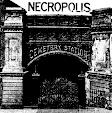Things that are true are not possibly true. They are just true!
Likewise, things that are false are
not possibly false. They are just
false!
If something is necessarily true,
then it is true, which means that it is not possibly true. And if something is
necessarily false, then it is false, which means that it is not possibly false.
Yet Alethic Modal Logic tells us
that something being necessarily true just means that it is not possibly not true.
Does this definition, or pair of
definitions for Necessity N and Possibility P, [(Na = -P-a) & (Pa = -N-a)], make sense, given our two Reality Principles, (1) [(a > -Pa) & (-a > -P-a)] and (2) [(Na > a) & (N-a > -a)]?
Let's see:




